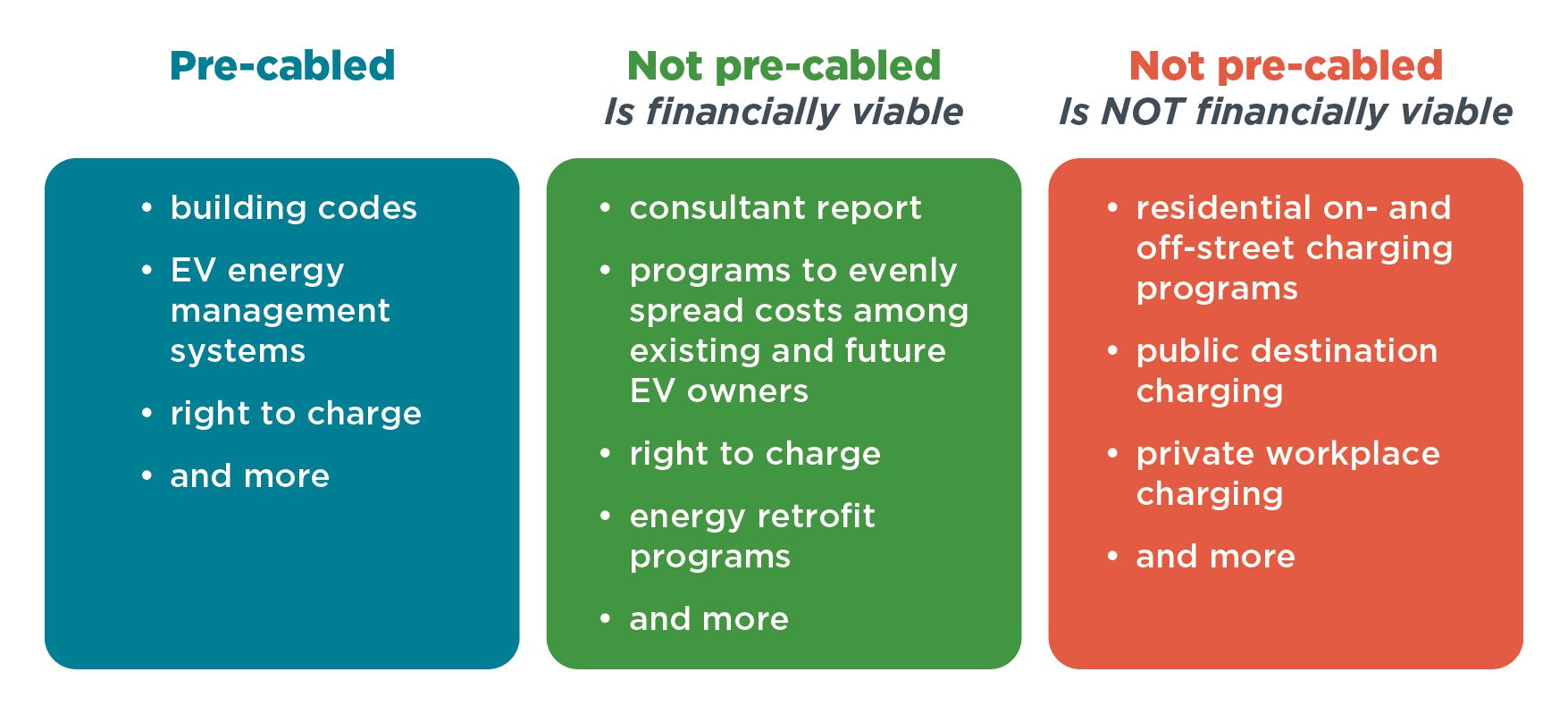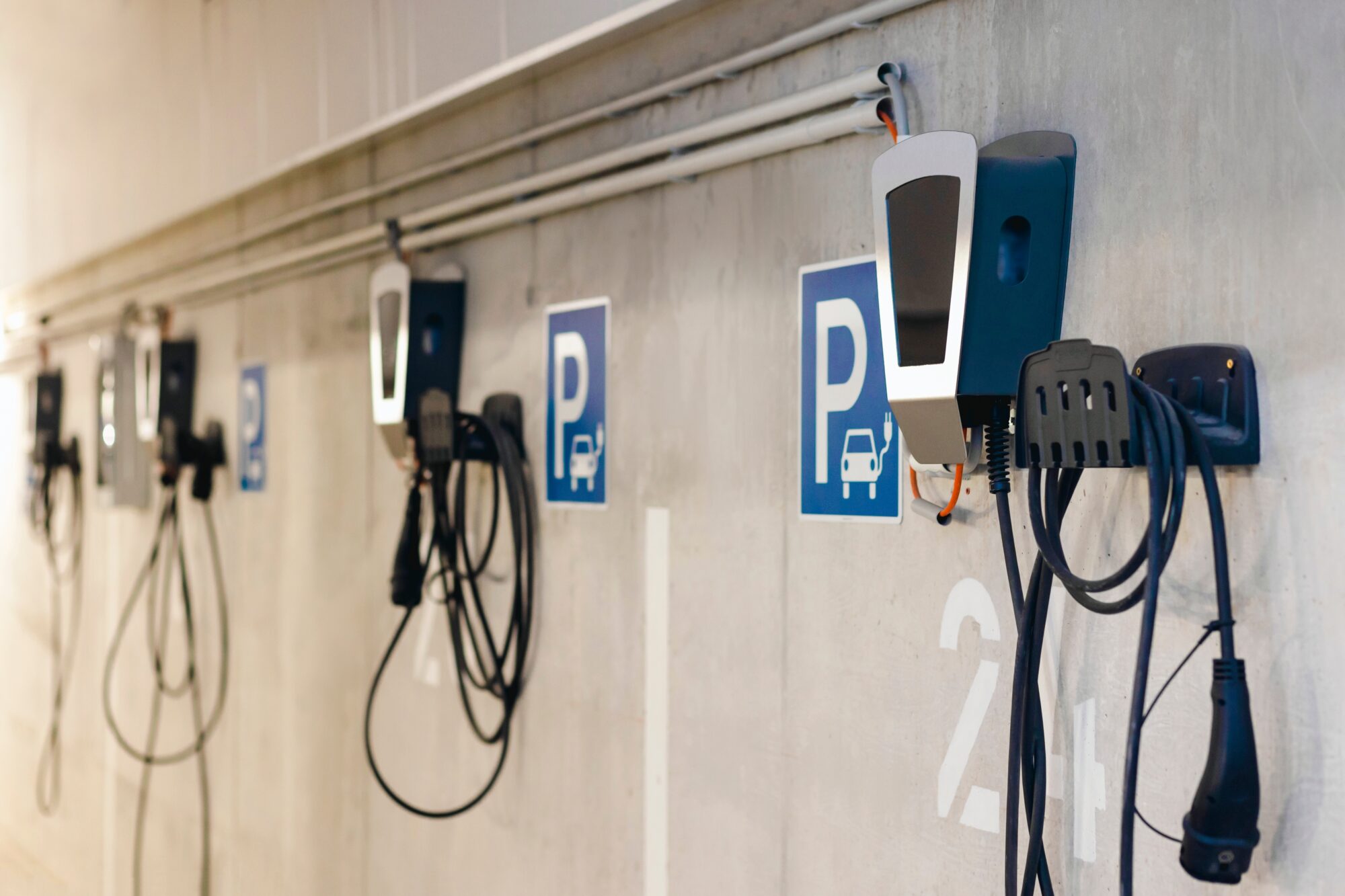A technical analysis of private overnight charging access in IZEVA jurisdictions
Blog
How European apartment dwellers can charge up and drive electric
The principal EU legislation regarding private charging infrastructure is included in the new Energy Performance Building Directive (EPBD). Its Article 12 mandates, among other things, the pre-cabling of parking spaces in new residential buildings and those undergoing major renovations. Even though existing residential buildings are almost completely left out of the regulation, there are several examples of solutions that have been implemented in Europe and elsewhere in residential parking lots that were not pre-cabled. I’ll highlight some of the key ones here.
The first involves consultation and planning. In the Netherlands, homeowners’ associations, housing associations, and housing cooperatives that have parking facilities can receive a 75% discount from the government (up to a maximum of €1,500) for a consultation from a licensed expert. This includes an assessment of their electrical installation needs, identification of available government incentives, a summary of applicable safety measures that could be implemented or are required, and an overview of how costs could potentially be distributed between the association and the users of the chargers. All of this is provided in non-technical language to facilitate communication among stakeholders.
Another clarifies the right to install chargers. It’s always cheaper to electrify all parking spaces at a building at once rather than doing it incrementally. However, not all building dwellers need a charger immediately, and some may never buy an electric vehicle (EV). To help address this, Norway’s right-to-plug law allows the full electrification of all parking spaces at a building under the condition that interested tenants provide the board or homeowners’ association with a comprehensive plan that specifies who will pay for what and when, how pricing will be fair and transparent, the safety measures they plan to implement, and more.
There are also innovative ideas for financing. Two programs in France that focus on financing were detailed in a recent report. One is a national decree that allows the public utility company Enedis to prefinance charging infrastructure electrical installation in apartment buildings. Enedis recoups its investment by setting a fixed price for EV owners in the same building when installing a charger in their parking spot. This price is only charged to EV owners if and when they need a charger and is the same for everyone in the same building. This fixed price is designed with a national minimum and maximum to ensure it remains affordable for most tenants, regardless of whether they live in an old building, where the actual price paid by Enedis would likely exceed the maximum due to higher electrical installation costs, or in a recently constructed building, where the actual price would be lower due to lower electrical installation cost. The program is designed so that the cheapest projects effectively pay for the most expensive ones.
The other program is a public-private partnership. Startup Logivolt, which specializes in chargers for apartment buildings, covers all the upfront costs related to the electrical installation of EV chargers and is then gradually reimbursed by residents. This is possible through a loan from Caisse des Dépôts, a French public financial institution. When a tenant joins the service, they are charged a set connection fee and non-participating tenants do not pay any fees. In addition to providing expertise and turnkey solutions, Logivolt is also responsible for applying for and collecting the available government subsidies, which removes that administrative burden from the building manager’s shoulders.
One program in California, the Property Assessed Clean Energy (PACE) Loss Reserve Program, also provides an innovative idea for financing. Property owners can use PACE financing for energy or water efficiency and clean energy home improvements. The upfront cost is financed by the California Alternative Energy and Advanced Transportation Financing Authority and the money is repaid over several years through increased property tax bills paid by the property owners.
Separately, in Baden-Wuerttemberg, Germany, regional government funding is available for E-Quartierhubs, off-street parking spaces equipped with shared charging infrastructure. Funding is available only if the project reduces on-street parking, thus creating opportunities to accommodate public transport, cycling, and pedestrian traffic and allowing more space for recreational activities. The application must be submitted through a municipality to ensure effective cooperation with public parking management agencies. If E-Quartierhubs are near existing apartment buildings and reasonably priced, they could provide solutions for apartment tenants who lack access to home charging.
As shown in the chart below, solutions exist for each building situation. Solutions suggested below and additional ones are described in this report.

While it is often more complex to access private home charging when living in an apartment building as opposed to living in a house, it is certainly feasible. It’s also cheaper: Refueling a battery electric vehicle costs less than refueling an internal combustion engine, even when living in an apartment.
Author
Related Publications

The first in a two-part blog series explores the European Union’s Energy Performance Building Directive (EPBD), focusing on the mandatory installation of private charging stations for electric vehicles in new and renovated buildings.

